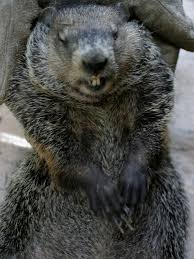After reading Reavis Wortham’s post on Saturday, I figured it was okay to tell this story.
 I’ve posted before about our beloved dog Kimber, a mix of Cavalier King Charles Spaniel and Boston Terrier called a Caviston. (And yes, it bothers me that it’s not spelled Cavaston, but no one consulted me.) When we first moved to the woodland house in West Virginia, she weighed less than five pounds and I was keenly aware that the entire world posed one big hazard for her. Not only was she prey to most other creatures, her girth was smaller than that of the floor vents which hadn’t yet been covered.
I’ve posted before about our beloved dog Kimber, a mix of Cavalier King Charles Spaniel and Boston Terrier called a Caviston. (And yes, it bothers me that it’s not spelled Cavaston, but no one consulted me.) When we first moved to the woodland house in West Virginia, she weighed less than five pounds and I was keenly aware that the entire world posed one big hazard for her. Not only was she prey to most other creatures, her girth was smaller than that of the floor vents which hadn’t yet been covered.
We fenced in about a half acre of the backyard/woods so Kimber could have a place to wander, but for the first, say, nine months of her life, she never wandered without an escort. I was her primary security detail. After a year or so, she’d filled out to about 18 pounds and had outgrown reasonable threats from owls and hawks. Only the largest dogs ever outgrow threats from eagles, but our eagles stay distracted by the Potomac River smorgasbord a few hundred yards away from our place.
 Once permitted to wander her fenced domain alone during the day, she turned into quite the squirrel hunter, chasing them great distances until the critters cheated and shot up a tree. I don’t think Kimber ever figured out why she couldn’t follow. She’s an avid deer chaser, too, though I’m not sure of her plan for when she caught one.
Once permitted to wander her fenced domain alone during the day, she turned into quite the squirrel hunter, chasing them great distances until the critters cheated and shot up a tree. I don’t think Kimber ever figured out why she couldn’t follow. She’s an avid deer chaser, too, though I’m not sure of her plan for when she caught one.
As neighbors joined our community, her canine best friends became a German shepherd and a Rottweiler. They let her hang out with them and played without crushing her. Like many small breeds, Kimber always thought she had way more wolf in her than she ever did.
As a human in her life, I of course knew better. Although Kimber aged out of danger from smaller predators, very real danger remained from larger carnivores–coyotes in particular. Even at her top adult weight of 20 pounds, she never went out at night without an armed escort. My rifle of choice: a Rossi Circuit Judge chambered in .45 Long Colt. The coyote gun lives its life staged at the back door all the time, easily accessible when needed. Often carried, only used once. On a snake. That’s a lot of gun for a snake.
Then came last week.
 Last week was reasonably cool for a June afternoon, so we left the downstairs door open to allow Kimber to come and go as she pleased to and from the back yard. My office sits on the second floor, overlooking the backyard and the woods beyond. I was doing as I always do while staring down the maw of an approaching deadline, pounding away on the keyboard, playing with my imaginary friends when a cacophony erupted from out beyond my windows.
Last week was reasonably cool for a June afternoon, so we left the downstairs door open to allow Kimber to come and go as she pleased to and from the back yard. My office sits on the second floor, overlooking the backyard and the woods beyond. I was doing as I always do while staring down the maw of an approaching deadline, pounding away on the keyboard, playing with my imaginary friends when a cacophony erupted from out beyond my windows.
Growling and barking. My wife screaming at Kimber to come. To stop. I heard other animal sounds.
I knew this was bad.
I bolted from my desk and raced down the stairs, down the hall, and through the family room to the back door, grabbing the rifle on my way out. I still had no idea what was happening, but the noise of it all had not decreased in intensity. If anything, it had gotten louder.
Outside now, I turned the corner and the crisis became clear. Kimber had tangled with a woodchuck (or groundhog, depending on where you live). Normally docile, woodchucks are herbivores and hover near the bottom of Mother Nature’s food chain. When confronted with a carnivore, they survive by running away. But Kimber was faster and she cornered it against a tree.
Best I could tell, Kimber thought it was a game. Her tail was wagging hard enough to dislocate itself at the root as she bounced around, taunting the woodchuck that thought it was fighting for its life. Those critters have wicked incisors and long claws that would tear a little dog apart. Given a clear shot, I was going to kill the woodchuck.
Let’s not forget that my wife was in the mix, too, trying to separate the sparring parties. One thing for sure: I had no safe shot to take.
And then I did.
Woody Woodchuck broke into an open field run and for a good three or four seconds, he was all alone. As I shouldered the rifle, though, my wife yelled, “No, please, don’t!” In that instant of hesitation–my fault, not my wife’s; mine was the only finger on the trigger–Kimber woke up to the chase and re-entered the sight picture, chasing the woodchuck down until it somehow managed to climb under the fence and make its escape.
So, Woody lives on to make another appearance. Maybe he was traumatized enough to stay away from our backyard. I look for him every day. So does Kimber, who is fine, by the way. Not a scratch on her.
But a known danger lives on because of a momentary hesitation. Though Kimber sleeps in our bed at night, she is a country dog and she’s happiest when she’s outside. It’s too late to turn her into an indoor dog, and I wouldn’t want to anyway. So, if you’re a woodchuck or a coyote or a copperhead and you’re reading this, do yourself a favor and hang out at a property down the road. At the very least, stay outside the fence.
If there’s a writing related takeaway to this story, it’s that opportunity is often fleeting, and that hesitation–indecision–keeps doors shut that could otherwise be open. Whether it’s a job opportunity or a creative decision in a story, sometimes making a decision–any decision–is better than stewing about it overnight.

In PA. we also call them whistle pigs. I agree with the wife on this one. Since he got back to his side of the fence, I say let him live.
I’ve heard them called whistle pigs. In fact there’s a very good bourbon with that name. As long as Woody stays outside the wire, I’ve got no quarrel with him.
Well, I’ll have to admit I scanned to the bottom to make sure Kimber was okay, then went back and reread the post. I’m with your wife and Warren–and I hope Woody stays on his side of the fence.
“If there’s a writing related takeaway to this story, it’s that opportunity is often fleeting,” is so true. People often ask why I continue to write well past retirement age and my response is 1. I can’t not write, and 2. if I’m going to write, I may as well get paid for it. I worked a long time to land a traditional publishing contract so why would I throw that away?
I’m not sure what retiring from writing would look like. Slowing down, maybe? Writing on spec again? I don’t know. I’ve still got three under contract, so I’ve got a few years to ponder the question.
From time to time I have been asked how my aeronautics training factors into my IT life (BTW, congratulations on the server upgrade). I tell them about the decision height and how my training was all about making the best decision I can with the information in hand.
I know there is another TKZ regular who is a pilot, although I forget who at the moment. Feel free to check me.
On the charts for an airport, on the approach there is a spot marked with a Maltese cross. It is about a 1/4 mile from the airport, in line with the runway at a specific altitude. It is the decision height. When you reach the decision height, you have two choices. See the runway and land or go around. No one likes going around. But to land you need to be able to see the runway and around it. Depending on what you are flying you may be making this decision at 60-120 mph. Now is a good time to make the call.
Every year a handful of pilots decide to wait another minute to see if they can see the runway. They find the trees, power lines, or other dangers near the airport they were supposed to avoid. They don’t get a second chance.
There comes a point when you need to make the call. Make a good one. That next minute of indecision might be your last.
Hi Alan. I’m that other pilot, and I agree flight training prepares you to make other decisions in life based on taking in all the information and making the best call available. Flying an approach into an airport in bad weather is a great example.
Happy flying!
I lean on my emergency responder training a lot as a guide to decision making. Every decision is important and time is of the essence. Your instincts are born of years of training that teaches you what will most likely work, and what will most likely fix the mistake if it doesn’t.
Great post, John! (Wish I could see the images, though…)
Very timely for me, because I’ve been hesitating over a major decision in my authorish life, and this cements for me that I need to either jump the fence or stay put.
Happy Humpster Day.
You had me worried, John. I’ve grown accustomed to thinking of Kimber as part of the TKZ community, and I was afraid you had bad news for us. Glad to hear everything worked out well — even for the woodchuck.
Great advice to be willing to make a decision and move forward. However, I have to admit I often sleep on a matter before committing. Things always look different in the morning.
There they are!
Thanks, John . . . great images–Kimber’s a cutie! (So is Chucky, BTW…)
🙂
My advice, courtesy of my dad the gun expert, is gun stocks are great bludgeons for close up situations, and you should add a shotgun to your arsenal.
Meaning no disrespect to your father, to bludgeon a woodchuck with a rifle stock would mean pointing the muzzle in a direction it shouldn’t point. And I’ve got all the shotguns I need, though I consider it the wrong choice for my coyote gun. If I need it for that purpose, Kimber will be in imminent danger and I don’t want any spread at all.
Better to bludgeon with the muzzle pointed in a safe direction than allow the dog to get hurt. But that’s me.
I feared the ending to this story, John. Glad Kimber and Woody are both okay. I love woodchucks. Do you have clover in your yard? That’s usually what they’re after. Remove the clover, remove the woodchuck. Simple as that. You could also plant garlic and pepper around the perimeter of your fence. They hate both smells.
Maybe it’s a flaw as well, and you just need to get on with the writing, make the decision, and move on – but it is also very convenient that writers can go back and change things as many times as necessary to get it right.
Make the decision – follow out the consequences.
If not happy, you can do it again.
Eventually, the choice that resonates becomes apparent, and we get to do it again as early as the next sentence.